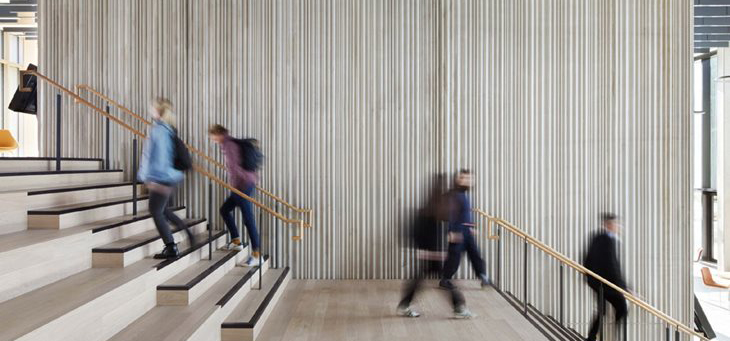Sustainability Series: Week 6, Sustainable precast concrete and masonry

Webinar: Low Carbon Precast Concrete and Masonry
Recorded: 14 November 2022
Precast concrete and masonry products are factory-produced and this provides built in material efficiency, which is important in managing carbon, but there are more opportunities to explore. This webinar focuses on the latest product developments using lower carbon concrete mixes, looks at calculating embodied carbon of cladding and facades, as well as reporting on the sector’s carbon reduction progress. A recording of this webinar is available to watch on demand.
Webinar: High Performance Masonry Housing
Recorded: 16 November 2022
The majority of new housing in the UK is constructed using masonry. This session considers the ways in which detailed design and specification is evolving to help new housing to meet current regulations and carbon targets, and look forward to the Future Homes Standard 2025. A recording of this webinar is available to watch on demand.
Webinar: Precast Concrete - Durability, resilience and circular economy
Recorded: 18 November 2022
In this seminar the durability and resilience of precast concrete and the potential to reuse precast elements is explored. Presenters will provide guidance on:
- How precast concrete addresses circular economy principles.
- Results from a recent fire test of precast concrete cladding.
- How Norway is leading the way in the reuse of hollowcore elements.
A recording of this webinar is available to watch on demand.
Blog: The Enduring and Modern Method of Construction
Precast concrete and masonry are simultaneously at the cutting edge of modern methods of construction (MMC), with new technology, including innovative offsite factory manufacture and advanced onsite installation techniques. But also utilise the inherent benefits of concrete as a material, meaning that today concrete is the world’s most versatile man-made material.
In this series we are here to talk sustainability and by using concrete MMC we are creating assets that are low carbon, have long life spans and deliver social value. Through increased digitalisation and offsite production, building elements can be designed with change of use, disassembly, and element reuse in mind – helping to play an important role in a circular economy.
It is some of the timeless benefits of concrete as a resilient material which really set it apart from other MMC construction methods, be that fire performance, thermal comfort, or acoustic properties.
It is also this resilience that, should the worst impacts of climate change manifest, can be relied upon to still deliver safe and sustainable buildings by standing up to damage caused by fire, release of water and shielding occupants from fluctuations in temperature.
No commentary on sustainability in the construction sector today would be complete without a word on ‘Social Value’. Another modern take on an enduring principle as one of the three original pillars of sustainable development, environmental, economic and social.
Here concrete MMC delivers too. Offsite construction offers worker safety with smaller installation teams and less time spent on site. The safety benefits of concrete MMC don’t end at installation. Concrete solutions are A1 fire rated and don’t burn, protecting occupants, whereas timber and modular MMC solutions can introduce combustible material and voids to a structure which compromise its safety.
In essence much of the content from the rest of the sustainability series can be applied to both precast concrete and masonry but the delivery model is offsite. Whether it is the lean design from week 2 or the adoption of low carbon mixes from week 5, precast concrete delivers while satisfying the growing government and CLC backed shift to offsite construction.
Written by Matthew Butcher, Campaign and Communications Manager, UK Concrete